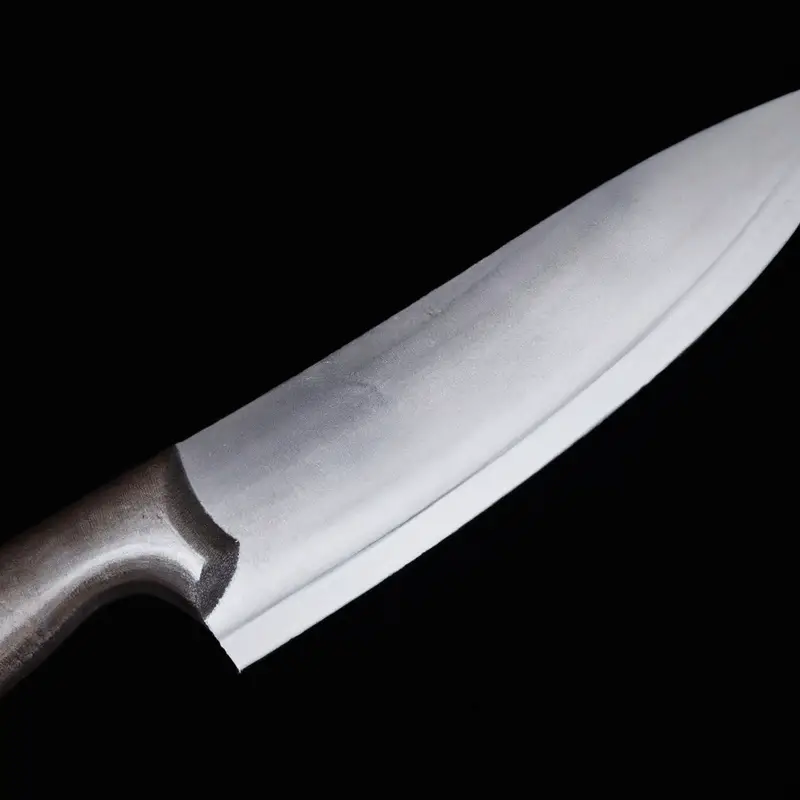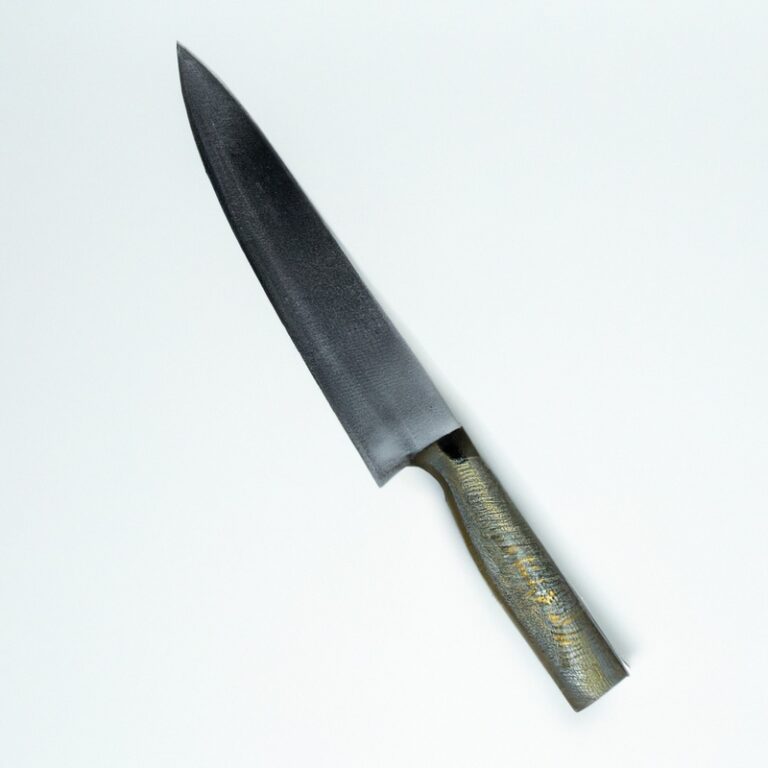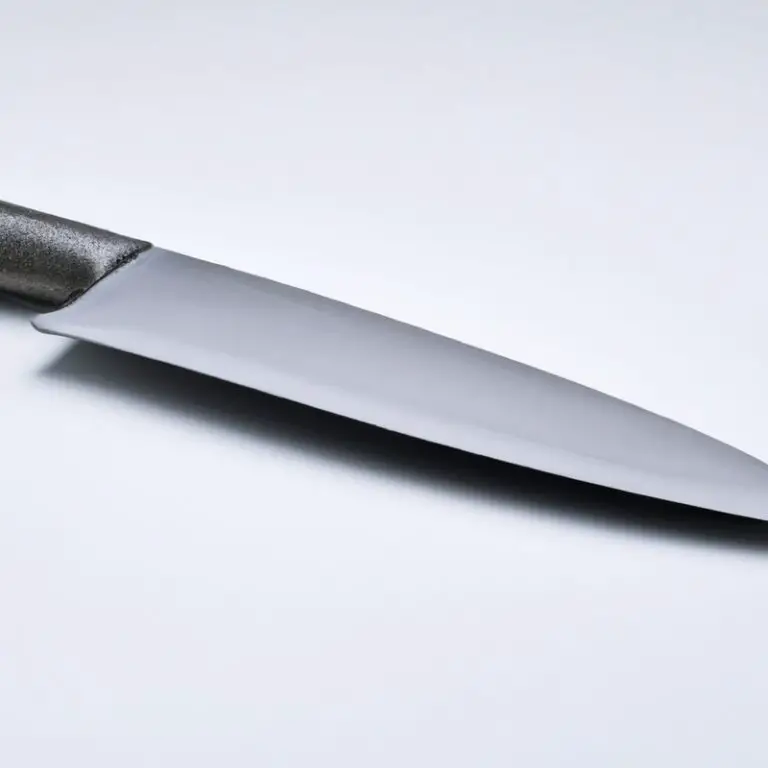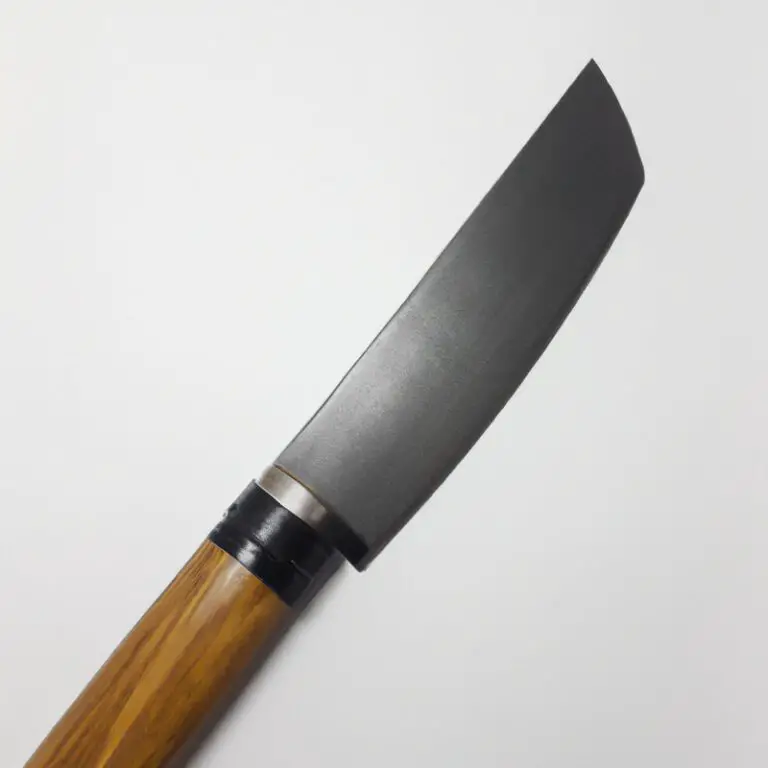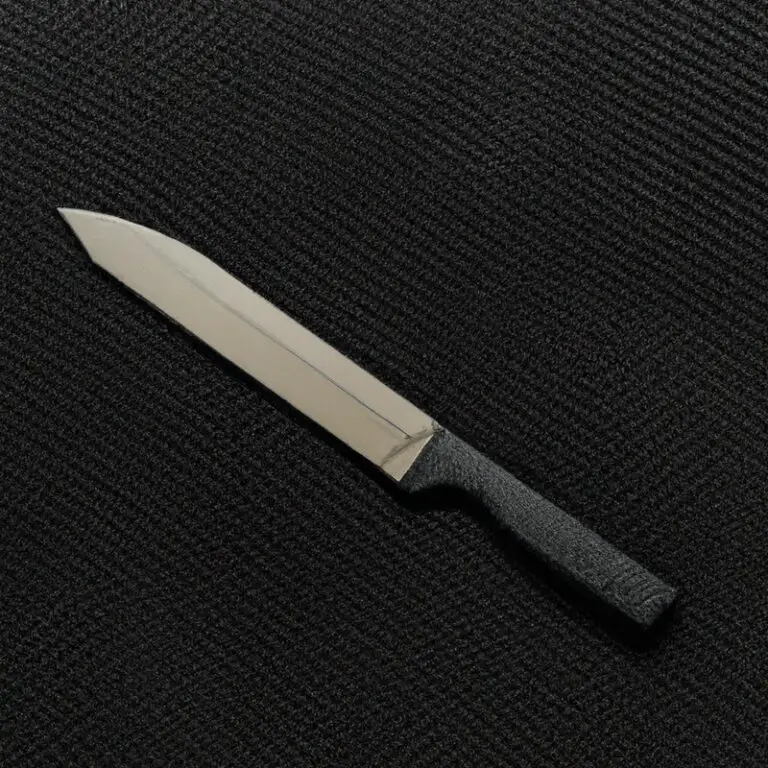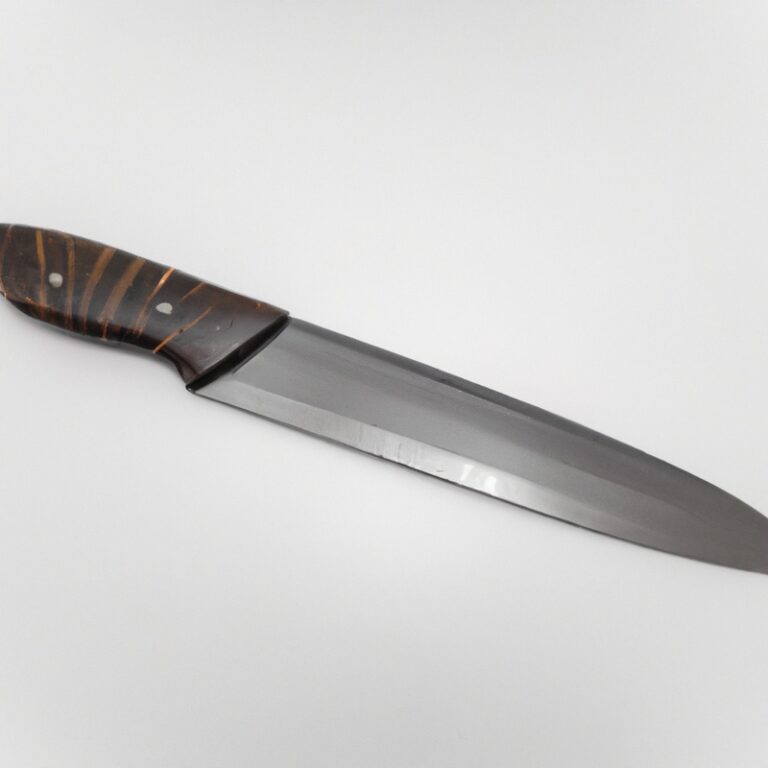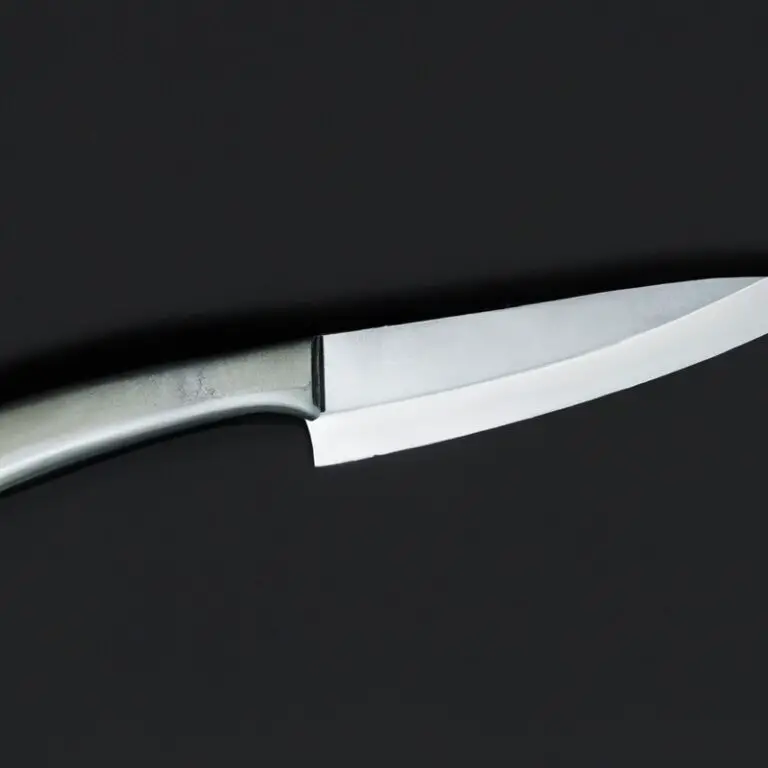How To Achieve Precise Cuts On Delicate Ingredients With a Gyuto Knife? Master Precision!
Key Takeaways:
- Mastering the technique of using a Gyuto knife can help achieve precision cuts on delicate ingredients like fish and vegetables, enhancing the visual appeal of your dishes.
- Maintaining a sharp blade and practicing proper cutting angles is crucial to achieving precise cuts with a Gyuto knife, minimizing damage to your delicate ingredients.
- Choosing the right Gyuto knife with a high-quality steel blade and comfortable handle can significantly improve your cutting experience and contribute to your success in the kitchen.
- Regular cleaning and proper storage of your Gyuto knife can extend its lifespan, promote hygiene and ensure that it remains a reliable tool in your cooking arsenal.
From perfectly sliced sashimi to finely minced garlic, precise cutting plays a crucial role in Japanese cuisine. And when it comes to crafting clean and accurate cuts, there’s no better tool than the Gyuto knife.
However, achieving precise cuts with this delicate ingredient-loving blade takes more than a good eye and a steady hand.
You need to know the right technique and care to maintain it. In this article, I’ll guide you through the essential steps to use your Gyuto knife like a pro and make the most of its precision cutting capabilities.
| Step | Description |
|---|---|
| 1 | Choose a sharp Gyuto knife with a thin blade and a pointed tip. |
| 2 | Hold the knife with your dominant hand and the food item with the other hand. |
| 3 | Place the tip of the knife on the ingredient and use a gentle sawing motion to start cutting. |
| 4 | Use the entire length of the blade to cut the ingredient in a smooth, continuous motion. |
| 5 | Let the weight of the knife do the work, and avoid pressing too hard. |
| 6 | Use a honing steel to maintain the sharpness of the blade. |
| 7 | Clean the blade and handle with warm water and mild detergent. |
Understanding the Gyuto knife: An overview of the blade’s design and functionality
The Gyuto knife is a Japanese chef’s knife known for its versatility and precision in the kitchen. It has an elongated, thin blade with a pointed tip and a slightly curved edge, which makes it ideal for slicing, dicing, and chopping a wide range of ingredients.
The blade’s design also allows for effortless rocking and push cutting, making it easy to achieve precise cuts on delicate ingredients like fish and meats.
Additionally, the blade’s construction typically features a high carbon content, which allows for a sharper edge and longer-lasting performance. Understanding the design and functionality of the Gyuto knife is essential when it comes to achieving precise cuts on delicate ingredients.
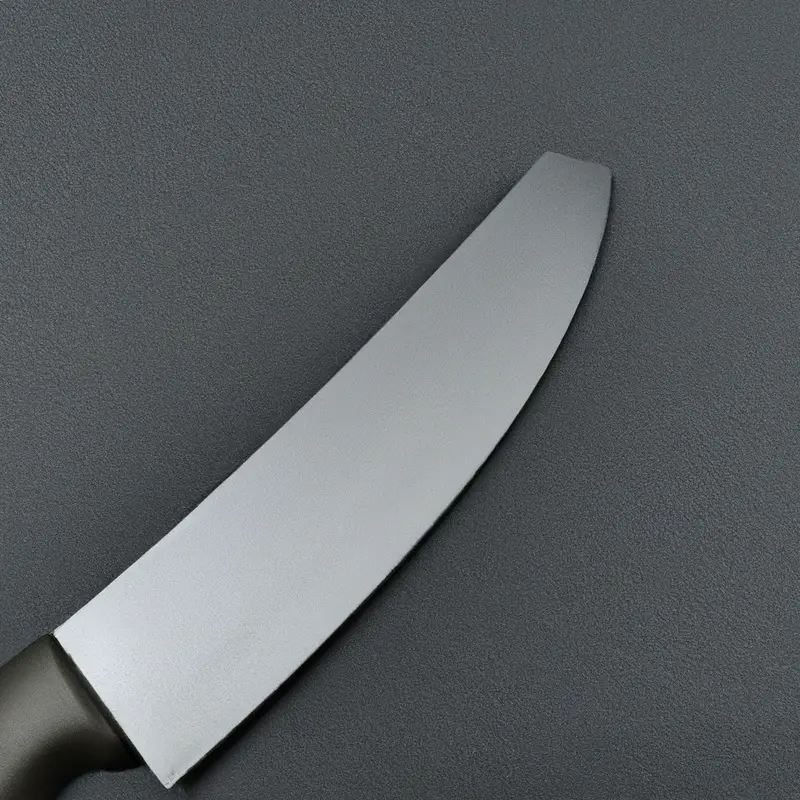
The importance of sharpness: How to sharpen your Gyuto knife to achieve precision cuts
The sharpness of your Gyuto knife is crucial to achieving precision cuts on delicate ingredients. Dull blades can crush instead of slice, ruining the texture and presentation of your dish.
To sharpen your Gyuto knife, you can use a sharpening stone or an electric sharpener.
Sharpening Stone:
- Wet the stone and place it on a non-slip surface.
- Hold the knife at a 15-20 degree angle with the sharp edge facing away from you.
- With light pressure, draw the blade towards you in a sweeping motion, ensuring the entire length of the blade is in contact with the stone.
- Repeat the process on the other side of the blade.
- Finish by honing the blade with a honing steel or leather strop.
Electric Sharpener:
- Follow the manufacturer’s instructions for your specific electric sharpener.
- Be sure to use the correct angle guide for your Gyuto knife.
- Run the blade through the coarse grit slot first, then follow with the fine grit slot.
- Honing the blade with a honing steel or leather strop is still recommended.
Regular maintenance of your Gyuto knife, including sharpening after every use, will not only improve your precision cuts but increase the longevity of your blade as well.
The right angle: Correct angle for holding the Gyuto knife for precision cutting
To achieve precise cuts on delicate ingredients with a Gyuto knife, it’s crucial to hold the blade at the correct angle. The angle should be around 15-degrees, which is slightly more obtuse than a traditional Western-style chef’s knife.
Hold the knife with your index finger and thumb on either side of the blade, creating a pinch grip, and use a gentle sawing motion to ensure accuracy.
Avoid gripping the handle too tightly, as this can lead to less control and force, resulting in uneven cuts. Mastering the correct angle and grip will enhance your precision cutting abilities and make your Gyuto knife a valuable tool in your kitchen.
The pinch grip: Mastering the pinch grip for precise control and accuracy
The pinch grip is essential for achieving precise control and accuracy when using a Gyuto knife. To master this grip, place your index finger and thumb on the blade’s heel, and the remaining three fingers on the handle.
Make sure that your hand is close to the blade’s heel for better control.
This grip allows for better precision when making delicate cuts, and it reduces the chances of the knife slipping from your hand. Consistent practice and developing muscle memory are vital to mastering this grip.
With time, you will achieve more control and accuracy when using a Gyuto knife.
The right cutting board: Choosing the best cutting board for delicate ingredients
When it comes to cutting delicate ingredients, choosing the right cutting board can make a significant difference. A wooden or bamboo cutting board is best for delicate ingredients as it provides a softer surface that won’t damage or bruise the ingredients.
Plastic cutting boards are another option but may not be as gentle on delicate ingredients as wooden boards.
It is crucial to ensure that the cutting board is clean, dry, and free from any lingering odors or flavors to prevent cross-contamination. Additionally, using a non-slip mat or damp paper towels under the board will prevent it from sliding during use.
Overall, selecting the right cutting board can enhance your precision cuts and protect your delicate ingredients from damage.
The right technique: How to execute precise cutting techniques with a Gyuto knife
To execute precise cutting techniques with a Gyuto knife, start by mastering the pinch grip. Hold the handle of the knife between your thumb and index finger, with your other three fingers wrapped around the blade for support and control.
Next, position the blade at the correct angle, approximately 15-20 degrees, and use a smooth, controlled motion to slice through the ingredient.
Avoid using too much force or sawing back and forth, as this can damage delicate ingredients. For precision slicing, use a push cut motion, keeping the blade in contact with the ingredient as you slice through it.
When using a rocking motion, keep the tip of the blade anchored to the cutting board and apply gentle pressure as you rock back and forth.
When cutting through hard or dense ingredients, use a gentle sawing motion to avoid exerting too much pressure on the blade. Remember to always use a sharp knife, and choose a cutting board that won’t dull your blade.
Finally, proper care is essential for maintaining the precision cutting abilities of your Gyuto knife.
Keep the blade clean and dry, sharpen it regularly, and store it properly to avoid damage.
Slicing techniques: Mastering the art of slicing delicate ingredients with a Gyuto knife
Slicing delicate ingredients with a Gyuto knife requires some special techniques. The aim is to avoid crushing or damaging the ingredients while still obtaining precise cuts.
Two notable slicing techniques that are useful for slicing delicate ingredients are the push cut and the rocking motion.
The push cut involves pushing the blade forward, using the weight of the knife to slice through the ingredient without applying too much pressure. This technique is ideal for making thin and precise cuts on delicate ingredients such as fish, vegetables, and herbs.
The rocking motion involves using the curved blade of the Gyuto knife to gain a back and forth motion to cut through the ingredient.
This technique is suitable for chopping vegetables, fruits, and herbs, as it eliminates the need to apply pressure when cutting. It is also essential to ensure that the blade’s sharpness is maintained at all times, as a dull blade can crush delicate ingredients and make it difficult to obtain precision cuts.
To maintain the blade’s sharpness, honing and sharpening the knife regularly is necessary.
Lastly, mastering the pinch grip technique is also important to achieve control and precision when slicing delicate ingredients.
The push cut: Achieving precision cuts with the push cut motion
The push cut is an essential technique for achieving precision cuts with a Gyuto knife. It involves pushing the blade straight down through the ingredient, instead of pulling or sawing.
This motion ensures a clean, even cut and minimizes damage to the delicate ingredient.
To perform a push cut, position the blade perpendicular to the cutting board and use a gentle, even pressure to push through the ingredient. Avoid rocking or sawing the blade, as this can cause bruising or tearing.
Practice this technique on a variety of ingredients to master the push cut and achieve precision cuts every time.
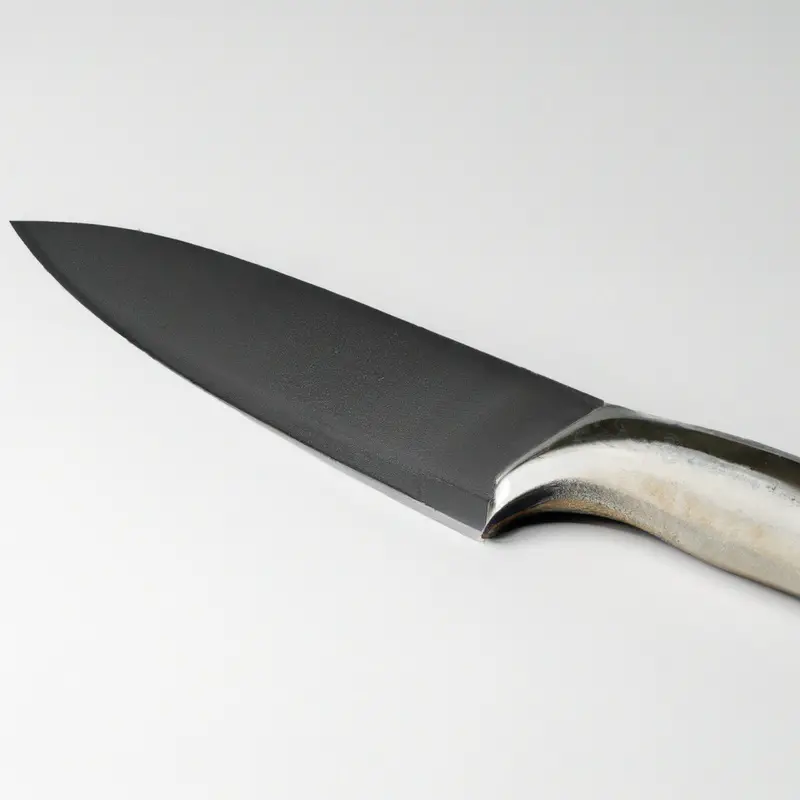
Rocking motion: Executing precision cuts with a rocking motion
To execute precision cuts with a rocking motion, first, you need to ensure your Gyuto knife is sharp and held at the correct angle using the pinch grip. The rocking motion involves using a fluid motion to move the blade back and forth while keeping the tip in contact with the cutting board.
This technique is ideal for cutting herbs, vegetables, and other delicate ingredients that require a clean, even cut.
To master the rocking motion, start slowly and gradually increase your speed as you gain confidence. Remember to maintain a steady pressure and angle, and keep your fingers safely tucked away from the blade.
With practice, you’ll be able to execute precise cuts with ease, making cooking a more enjoyable and efficient experience.
Proper care: How to properly care for your Gyuto knife to maintain its precision cutting abilities
Proper care is essential to maintain the precision cutting abilities of your Gyuto knife. Here are some tips to help you take care of your knife:
- Clean your knife after each use using warm water and soap. Do not leave it soaking in water or put it in the dishwasher.
- Dry your knife thoroughly after washing it to prevent rust from forming.
- Store your knife in a sheath or a knife block to protect the blade and prevent accidents.
- Sharpen your knife regularly to maintain its edge. Use a whetstone or a honing rod for sharpening.
- Avoid using your Gyuto knife for tasks it’s not designed for, such as opening cans or cutting bones.
Following these simple care tips will help extend the life of your Gyuto knife and keep it performing at its best.
Final Verdict
Mastering the art of precise cutting with a Gyuto knife requires a combination of sharpness, technique, and proper care. Understanding the knife’s design and functionality, holding it at the correct angle with the pinch grip, and choosing the right cutting board are all critical elements.
Slicing techniques, such as the push cut and rocking motion, can also enhance precision.
With these tools and techniques in hand, anyone can achieve professional-level cuts on the most delicate ingredients with ease. Remember to prioritize proper care, and the Gyuto knife will remain a loyal ally in the kitchen for years to come.
By following these steps, you can become a true master of the Gyuto knife, impressing friends and family with your culinary skills.
As you continue on your culinary journey, rely on these tips to elevate your precision cutting to the next level.

